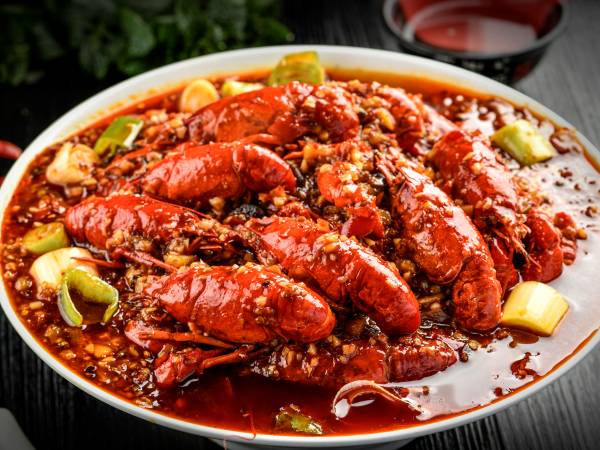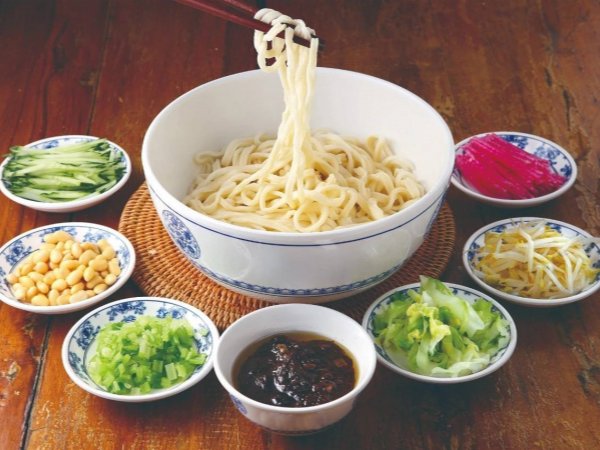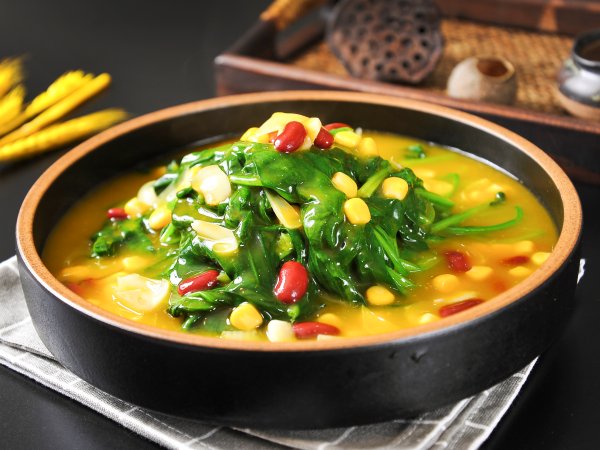Chinese Cuisine
Chinese cuisine, one of the important components of Chinese culture, also known as Chinese food culture, is one of the three great cuisines of the world (along with French cuisine and Turkish cuisine) that has had a profound influence on the East Asia. The recipe books come from dishes from various regions of China.

Varieties of Chinese Dishes
Chinese food has a wide variety of dishes. In addition to classification by region, they are also classified according to different consumers and processing methods.
- Consumption category: Due to different consumers, different levels of dishes have been formed, including home dishes, market dishes, public dining dishes, temple dishes, official dishes, court dishes, and medicinal dishes.
- Processing category: Due to the various processing techniques of Chinese dishes, as well as the differences in the form and function of dishes, they are mainly divided into cold dishes, hot dishes, main dishes, complementary dishes, desserts and soups, etc.

Due to differences in geography, climate, products, culture and beliefs, there is a great difference in the taste of dishes, which has given rise to numerous culinary schools, including the four great culinary schools and the eight great culinary schools. The four great culinary schools are Shandong cuisine in the lower Yellow River, Sichuan cuisine in the upper Yangtze River, Huaiyang cuisine in the Huai'an-Yangzhou area in Jiangsu, and Guangdong cuisine in the Lingnan region. Because these culinary schools have evolved naturally, they can only be distinguished in terms of the ingredients, production methods, flavors, and artistic styles of their dishes.

Characteristics of Chinese Cuisine
Chinese cuisine emphasizes excellence in color, aroma and flavor. This is not only a standard for a dish, but also for an entire meal.
Color
Refers to the visual appearance of a dish, where a harmonious combination is sought between the natural colors of the ingredients and seasonings, sometimes green vegetables, tomatoes, onions, etc. are used to enhance the visual effect.
Aroma
Refers to the aroma of the dish, which includes both natural fragrances and aromas generated during cooking.
Flavor
Refers to the flavor and texture of the dish, which constitute the soul of the dish. It is the result of the organic combination of main ingredients, seasonings and different cooking methods.

Meaning
Refers to dishes that evoke associations or have a special meaning.
Shape
Shape is an extension of color, and refers primarily to the shape of the plate and the decoration.
Nutrition
"Food is better than medicine", this principle highlights the importance of nutrition in food, emphasizing the balanced combination of nutritious ingredients, both plant and animal.

Selection of Ingredients in Chinese Cuisine
The selection of ingredients in Chinese cuisine is very wide. There is a popular saying that says: "In the mountains there are animals, in the clouds there are swallows, on the land there are cattle and in the sea there is freshness." Virtually anything that can be eaten can be used as an ingredient in Chinese cuisine. However, the choice of ingredients is related to the quality of the dishes.

Seasonal suitability
The quality of ingredients varies depending on the maturity of the animals and plants. For example, in Huaiyang cuisine it is said that "swordfish is not suitable after the Qingming Festival, and sturgeon is not suitable after the Duanwu Festival."
Regional Suitability
Ingredient quality varies by growing region. For example, for crab, Shanghai crab is preferred. However, due to the development of modern science and technology, regional differences have become less important.
Differences in Varieties
When preparing some dishes, different varieties of ingredients are needed. For example, for roast Peking duck, a unique variety of Peking duck is used; while white chicken is made with chicken of three varieties. These chickens are said to be castrated when they are young and fed a specific amount of peanuts.

Difference of Parts
Ingredients from different parts are prepared in different dishes. For example, in homemade dishes, "pieces of meat" are made from tenderloin.
Freshness Requirement
Almost all Chinese dishes require fresh ingredients.
Changes Over Time
For example, Beijing roast duck used to be preferred to be more fatty, but nowadays it is preferred to use lean duck. Protected animals and precious plants are no longer used as ingredients. The use of insects, such as scorpions and lobsters, is expanded, and other sources of ingredients, such as French snails, are introduced.

The Intensity of the Fire for Cooking
Fire intensity refers to the temperature and duration of the fire used during the cooking process, according to the maturity, texture, thickness, size and preparation requirements of the ingredients of the dish.
The intensity of the fire is a key link in culinary technique. Even if you have good ingredients, seasonings, and cutting skills, if the intensity of the heat is not adequate, the dish will have no flavor, and could even be raw or burned.
Chinese cuisine has a variety of cooking methods, including steaming, stir-frying, frying, boiling, roasting, frying, stewing, baking, stewing, simmering, etc., each of which can be subdivided into many categories. During the preparation process of Chinese dishes, great attention is paid to the intensity of the fire. For example, in the simplest case of steaming pork ribs, if cooked for too long, the meat will become tough, and if cooked for too short, it will not be fully cooked.

Fire intensity classification
- Strong fire, also known as vigorous fire or rapid fire.
- Medium heat, also known as moderate heat.
- Slow heat, also known as low heat or gentle heat.
- Minimal fire, also known as weak fire.
Fire intensity function
Mastering the intensity of fire means properly using various degrees of heat and scientifically controlling the duration of its application, which affects the preparation of the dish.
Correctly managing the intensity of the fire and the duration of the cooking time allows the ingredients to mature perfectly, preventing them from being raw or burning.
After heating, some of the nutrients in the ingredients in the dish are decomposed; By using fire intensity appropriately, nutrient loss can be reduced.
If the intensity of the heat is not sufficient, the dish will not reach the temperature necessary to eliminate the bacteria present in the ingredients. By correctly controlling the intensity of the fire, sterilization and disinfection of food is achieved.
Chaozhou cuisine pays special attention to color, aroma, flavor and presentation. By properly controlling the intensity of the heat, seasonings can penetrate the ingredients, creating tender, soft, fresh and delicious dishes, with a color and shape that meet the required standards.

Classification of Chinese Cuisine
Chinese food is mainly classified into eight major culinary styles, which are: Shandong food (Lǔ cài), Sichuan food (Chuān cài), Canton food (Yuè cài), Fujian food (Mǐn cài) , Suzhou food (Sū cài), Zhejiang food (Zhè cài), Hunan food (Xiāng cài) and Anhui food (Huī cài). At the same time, the theory of the four great culinary styles is also mentioned, which generally refers to Shandong food, Sichuan food, Canton food and Suzhou (Huáiyáng) food.
Development of Chinese Cuisine
Ancient Era
According to historical records, more than 5,000 years ago, China already had foods such as roast meat and roast fish. During the Shang Dynasty, Yi Yin harmonized the five flavors, and during the Zhou Dynasty, a food called "Bazhen" appeared, which had a great influence on later generations.
Rapid Development (About 420 - 979 A.D.)
During the Han and Wei dynasties of the southern and northern eras, Chinese cuisine developed rapidly and many famous dishes appeared.
"Wuhou Qing", invented by Lou Hu of the Han Dynasty, was the first mixed hot pot in China. In the bamboos excavated in Mawangdui Tomb Number One in the Han Dynasty, hundreds of dishes are recorded.
In "Qimin Yaoshu" written by Jia Sixu of the Northern Wei Dynasty, more than 200 dishes are listed.
With the introduction and popularization of Buddhism, and with the promotion of Emperor Wu of the Southern Liang Dynasty, the Buddhist vegetarian diet gradually began to influence society, leading to the further development of existing vegetarian dishes in China.
During the Sui, Tang and Five Dynasties, there were also new developments in colorful dishes and Chinese medicinal dishes.

Shaping of Cooking Style (About 960 - 1279 A.D.)
During the Song Dynasty, Chinese cuisine experienced a period of great development. In the markets of the capital Bianjing and Lin'an, there were a wide variety of cold dishes, hot dishes, soups and colorful dishes, in hundreds.
At that time, there were already outlets for dishes labeled as southern, northern, or Sichuan in flavor, indicating that China's major cooking styles were already taking shape during the Song Dynasty.
Development of Varieties (About 1271 - 1949 A.D.)
During the Yuan, Ming and Qing dynasties, Chinese cuisine continued to develop, with thousands of varieties of dishes. From the end of the Qing Dynasty to the beginning of the People's Republic of China, with the arrival of foreigners to China, Chinese cuisine merged with certain Western dishes.
Heritage and Innovation (1949 A.D. - Today)
After the founding of the People's Republic of China, especially since 1979, gratifying results have been achieved in the heritage and innovation of dishes. Traditional dishes from different regions of China have become available on the market again. In addition to imitation dishes from the Beijing court, places such as Xi'an, Hangzhou, Kaifeng and Yangzhou have also developed imitation dishes from the Tang and Song dynasties, Kong family dishes and dishes from the House of Red Dreams.


















